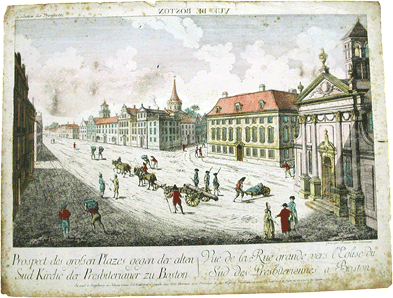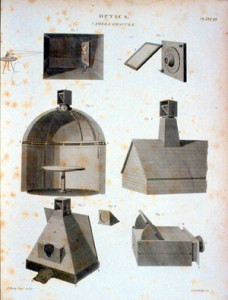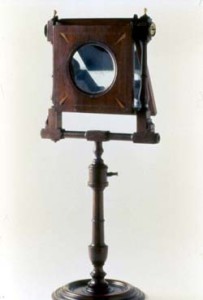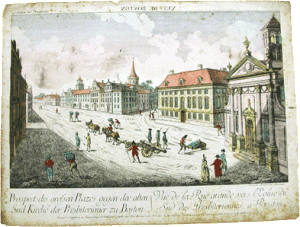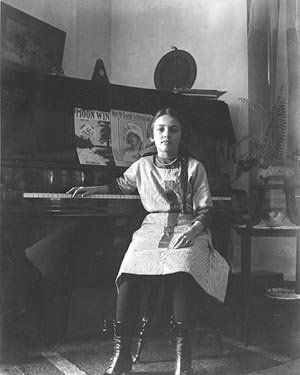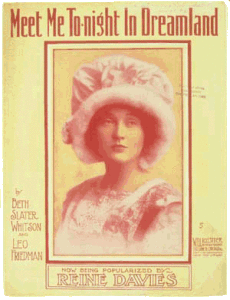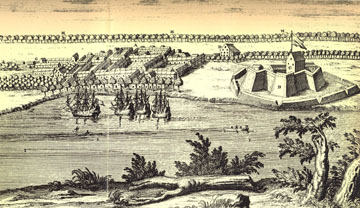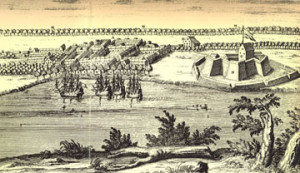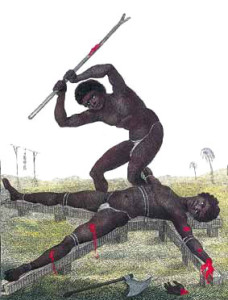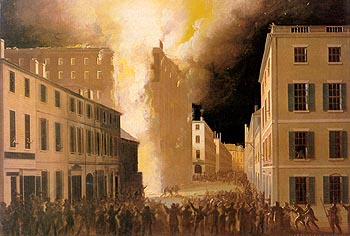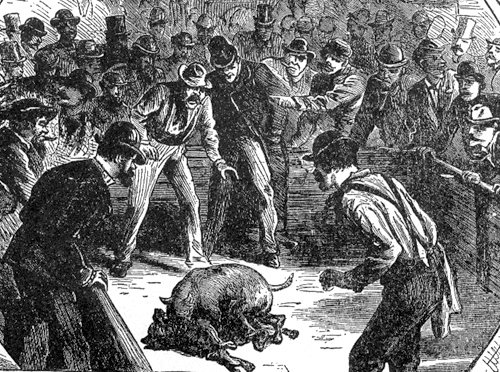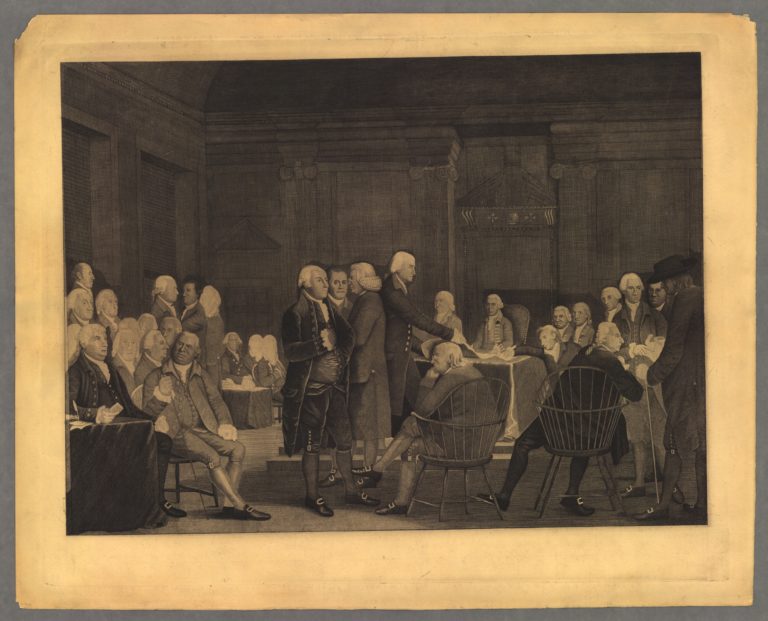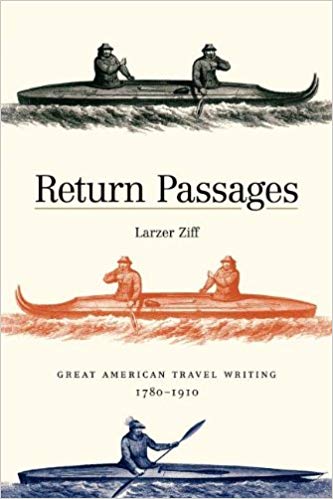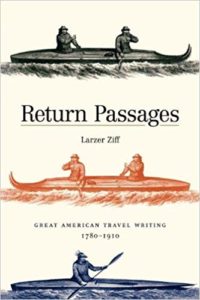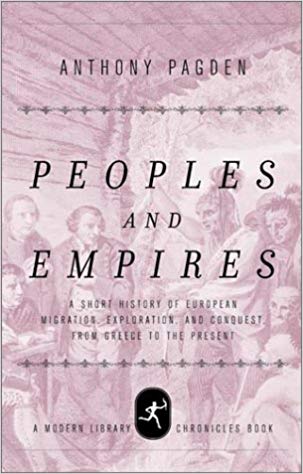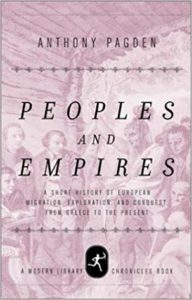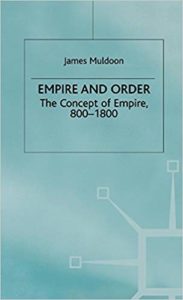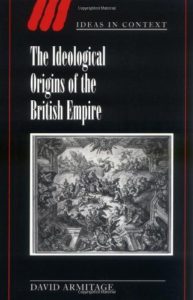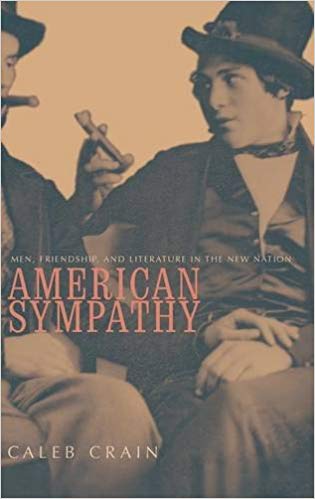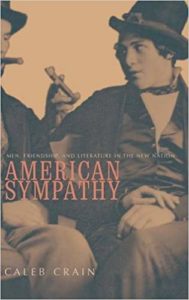This Little House of Mine

Part I
It’s embarrassing to remember now. We were in the library and I was trying to find The Little House in the Big Woods for my six-year-old daughter. I was looking for the famous series of books by Laura Ingalls Wilder in juvenile nonfiction. My husband looked at me, bemused. “But they’re novels,” he said. The voice that squeaked out of my mouth and the tears that sprang to my eyes as I vehemently disagreed came not from my adult self but from the little girl still deep inside me. Complicated emotions welled up as I started to laugh at my own reaction. In a single instant I saw myself passionately defending an assumption that I was simultaneously letting go: my previously unchallenged childhood belief that the Laura Ingalls Wilder stories were really, truly true. A panicky feeling swept over me as visions of Laura and her sister Mary, and Ma and Pa and baby Carrie raced through my mind.
If these stories were made up, it was not only my child-self who would feel betrayed; my job was on the line as well. I have long held that Laura Ingalls Wilder was one of the reasons I became a historian. My intense reading and rereading of her books was a central pleasure of my girlhood. I stored away tidbits of information about “the pioneer days”—like how Ma used carrots to color winter butter—that stayed in my mental treasure box for years. Despite being a relatively docile, blonde older sibling, I deeply identified with the headstrong, brown-haired, younger sister Laura. The act of projecting myself back into her world, of imagining another time, of absorbing the details of daily life, now seems like a direct precursor of my vocation as a women’s historian. The mere suggestion that the source of all that early “research” was unreliable struck me as deeply unsettling.
I’m not sure how I made it this far without realizing that I would find Wilder’s books on the fiction shelf. Partly, I guess, I really didn’t want to know. But after my forced epiphany in the public library, that changed. Now, indeed, I did want to know. Flooded with memories of the Ingalls family pioneer trek across the Midwest, I wanted to know how much was true, and how much was not. I felt ready, even eager, to read biographies of Wilder and scholarly analysis of her work. I was nervous, certainly; afraid I might lose something dear to me. But I set out with a sense of excitement, too, newly willing to see Laura through grown-up eyes.
Now, having researched “the truth” about the Little House books, I find I can live with my new knowledge. In fact, the process of learning about the stories has been quite bittersweet, in a way akin to growing up. I have had to let go of my fond, naïve trust in the narrator and learn to accept new realities, including the impossibility of knowing certain things for sure. My relationship to Laura Ingalls Wilder has been changed, but not destroyed.
What I learned can, I think, be divided into two categories. First is a set of simple facts that conflict with the books. For those of you who did not thrill to these books as children, let me remind you of the basics. There are eight in the series, written by Wilder in the 1930s, when she was in her sixties. The books follow the late-nineteenth-century Ingalls family from their home in the “Big Woods” of western Wisconsin, to Kansas, Minnesota, and finally South Dakota. Written in a straightforward, realistic style, the books have seduced generations of readers with their apparently true rendition of the Ingalls’s pioneering life.
The devil, as they say, is in the details. For instance, Laura’s sister Carrie was born on the Kansas prairie in 1870; she wasn’t alive yet when the family lived in the Big Woods although she is present in the story. A baby brother, Freddie, who died at nine months old, never appears in the books. Ok, I could handle those. But the fact that Laura Ingalls left the woods of Wisconsin for the open prairie when she was only three years old suddenly reconfigured my whole relationship to the stories. It surprised me because in the Little House in the Big Woods, the first book in the series, she is five. How could Wilder remember all those things from when she was three years old? I immediately recognized, of course, that she couldn’t. Suddenly the foundation of the little house seemed much shakier.
The second category of my discoveries revolves around this new perspective; I came to think of the little house as a stage set, rather than an actual home. It seems basic, but for me it was a completely different approach to these works, as I began to invoke the tools one uses to read fiction, not autobiography. Anne Romines’s excellent book, Constructing the Little House: Gender, Culture, and Laura Ingalls Wilder (Amherst, 1997) confirmed what I was beginning to sense: the intricacy and depth of these books as novels. I grew to treasure not only Wilder’s recollections, but her invented world. While I mourned the loss of my belief in these books as what really happened, I gained a new appreciation for the work of a mature artist. I found it exciting to follow through on themes embedded in the text. I began to look for the implicit, rather than only the explicit, messages. I was newly fascinated by the nature of Wilder’s portrayal of the frontier and the “others” she encountered there. My adult reading of her books and of the scholarly comments on them amplified and made clear whispers I had heard from the text as a child but had never been able to fully understand.
Part II
Coming to accept Wilder as a novelist was only the first step, and it was not painless. It didn’t answer my biggest question, which was still, “How much of this is true?” Even though, as a historian, I know that one’s memory is not always a reliable source, still I hoped to find reassurance that what she described was true to memory, at the very least.
I didn’t always get what I wanted. As soon became clear, the earlier books deal with a period that predated Wilder’s own memories. Laura Ingalls Wilder was sixty-five in 1932, when she published Little House in the Big Woods. She had started her writing life two decades earlier, in 1911, when she began publishing advice on a variety of farm topics in the local periodical, the Missouri Ruralist, and later became their home editor.
But Wilder’s transition from farm wife to full-fledged author and novelist was drawn out. By 1915 her only child, Rose, was a successful newspaper reporter in San Francisco, where Wilder visited her and began to think about writing more herself. In the late 1920s she finished an autobiographical story called “Pioneer Girl,” but could not find a publisher. She rewrote it, changed the narrator from first person to third person, broadened the story to include more about her whole family, and aimed it specifically at children. Thus the Little House series was born with the publication of Little House in the Big Woods in 1932.
By the time Wilder was writing about her family’s life on the frontier at the end of the nineteenth century, then, more than a generation had passed, and America was struggling through the Great Depression of the mid-twentieth. For the depiction of her family’s life in the Big Woods and on the prairie, (actually the Osage Indian Reserve in southeastern Kansas), Wilder relied less on history, or even on memory, than on memories of memories: the stories her parents had told her of those years.
While Wilder was concerned in many cases with accuracy—for information about the Osage Indians, for instance, she returned to the area to conduct research and corresponded with historians—she did not hesitate to shift reality to suit the needs of fiction, or her pride. Referring to On the Banks of Plum Creek, she corresponded with her daughter, Rose Wilder Lane, who was helping edit the manuscript: “I have an awful suspicion that we drank plain creek water, in the raw, without boiling it or whatever. But that would make the reader think we were dirty, which we were not. So I said a spring. There could have been a spring near where Pa watered the oxen or there could be one near the plank footbridge. As it is located in my imagination, you may put it where it is most convenient.”
How many other pieces of the story were added, or deleted, to avoid the charge of being “dirty” and why? The first part of the question probably can’t be answered. Hints for the second may be located in the story of Wilder’s adult life. Perhaps her concern with cleanliness grew out of her participation in the Progressive Era’s home economics movement. She was an officer in the Missouri Home Development Association, which sought to bring a degree of scientific and professional expertise to farm women’s work. As a child, I was not much interested in the grown-up Laura. Now, perhaps not surprisingly, the story of her life as an adult is a central piece of the puzzle for me.
And I’m not the only one; Wilder has puzzled many scholars. Her instruction to her daughter to locate the spring “where it is most convenient” raises a significant controversy in the world of Wilder experts. What exactly was the role played by Wilder’s daughter, Rose Wilder Lane, who was a professional writer? Early profiles of Wilder written after the initial success of the Little House books in the 1930s presented her as an untutored, natural writer with an amazing memory channeling and then jotting down her childhood experiences. The polished nature of the works suggested to some, therefore, that Lane must have been mainly responsible for their success as literature. But other scholars disagree. Recently Wilder’s earlier writing, including her decade as a columnist for the Missouri Ruralist, and the travel diary she published of her own trip with her husband from Minnesota to Missouri, has been the focus of more attention. Clearly she had honed her craft before publishing the books that made her famous. With this background in mind, it becomes less surprising that Wilder could create her memorable books. Nevertheless, scholars agree that collaboration between mother and daughter was central to the process that gave birth to the series.
It doesn’t much bother me to think of Rose having a hand in the stories. Maybe it’s because I “knew” her as a baby in the last book, The First Four Years (found among Wilder’s papers after her death and published in 1971). Or maybe it’s because I think many authors get help, even if our literary culture doesn’t like to admit it. Manuscript pages housed in the Herbert Hoover Library show how Wilder handwrote the stories and passed them to her daughter, who typed them up, making changes here and there. Their surviving correspondence reveals that they often discussed plot and details at length. To me, seeing this collaborative creative process come to light was only reassuring. I think students of writing are often shielded from the fact that most writers get help not only from editors, but from friends, writing groups, spouses, or partners. With Wilder and Lane, what in many other cases remains unseen has simply become more visible.
Part III
Sitting in a coffee shop a few months ago I had another experience similar to my first jolt in the library. While the first one led me to question these stories’ veracity, the second made me consider their politics. After I described my project to an acquaintance, she replied that she believed much of Wilder’s emphasis on self-sufficiency and independence was a rebuttal to Franklin Roosevelt’s New Deal. My heart sank as I recognized the plausibility of that claim. Despite my years of training as a historian, it had never occurred to me to think of the Little House books in the context of the Depression during which they were written. Indeed, according to Wilder’s biographers, FDR’s New Deal did not sit well with Laura, her husband Almanzo, or their daughter Rose. Although Democrats by dint of their longstanding familial affiliation, they referred to FDR as “a dictator” and disliked his programs as “far too powerful and meddlesome.” Surely these feelings undergirded Wilder’s attempts to show how her family survived without “hand-outs.”
I don’t like thinking of Wilder as an anti-New Dealer, but I find other charges still harder to stomach. That she was a racist, for one. While I accept that she shared in her culture’s racist failings, I maintain that her views are complicated rather than simplistic. I disagree with those who, based on the claim that her works are harmful, call for censorship. In 1998 the Saint Paul Pioneer Press printed an editorial by Deborah Locke entitled “Cleaning ‘House'” that claimed, “Laura Ingalls Wilder’s children’s books about a ‘heroic’ white settler family are filled with patently racist and absurd portrayals of Indians. Her series is utterly inappropriate for third-graders.” The Osage writer Dennis McAuliffe Jr., in a book about his family’s history, wrote “I would not want my child to read Little House on the Prairie. I would shield him from the slights [it] slings upon his ancestors.”
I understand these charges. In Little House on the Prairie the Ingalls’s neighbor, Mrs. Scott, voices the views of many settlers when she says that the land should belong to whites rather than Indians. “Land knows, they’d never do anything with this country themselves. All they do is roam around over it like wild animals. Treaties or no treaties, the land belongs to folks that’ll farm it. That’s only common sense and justice.” Mrs. Scott, if not her creator, believed the old adage that the only good Indian was a dead Indian. There are several passages in the books where Indians are described as barbarous or animalistic. When Laura sees two Indians coming toward her and Mary as they play on the prairie, Wilder describes them as “naked, wild men,” whose eyes were “black and still and glittering, like snake’s eyes.” Laura and Mary are terrified when they see the men enter the house and wonder, “Oh, what are they doing to Ma!”
But Wilder’s attitude toward Indians is not one dimensional. In the scene above, Laura finally slips into the house to protect Ma and watches the two Indians from behind a slab of wood leaning against a wall. When one of the men spots her and their eyes meet, the description changes tone: his eyes “shone and sparkled at her.” Shining and sparkling eyes are a familiar trope in the book, and usually describe those nearest and dearest to Laura, especially Pa. After the men leave, Laura remarks to her mother that they “smell awful.” But Ma replies, “[T]hat was the skunk skins they wore.” There is a recognition, at least, that the smell is not inherent in the people but comes from the clothing they wear.
Despite this one instance of clear-sightedness, Ma is indeed deeply frightened of Indians, and that fear leads her to dislike them. Implicit in Laura’s description of Ma, I believe, is a critique. Clearly Ma, who scolds Laura for forgetting her sunbonnet because the girls are “getting to look like Indians,” is afraid of what scholars today would call “otherness.” But Laura also reveals how that fear depletes her and her family. In On the Banks of Plum Creek, the family buys a little spotted cow from a Norwegian couple who have named her “Reet.” Laura gleefully figures out that the name means Wreath, for the rosy circles on her hide. Ma firmly and unimaginatively insists, “Her name is Spot.” In describing this scene, Wilder lays bare her mother’s ethnocentrism and shows how it blinds her to the poetry of life on the frontier.
Not only does Wilder implicitly criticize Ma’s fear of Indians, she makes Pa speak up on their behalf, and describes Laura as fascinated by and attracted to them. Pa defends the Indians to Ma and their neighbors. When other whites accuse the local tribe of setting the prairie on fire to burn the settlers out, he reminds them that it is a traditional farming technique. He declares that Indians “would be as peaceable as anybody else if they were let alone. On the other hand, they had been moved west so many times that naturally they hated white folks.” One of the most powerful moments in the Little House on the Prairie is near the end, as the Indians are leaving the area, and Laura for the first time sees a papoose. As her eyes lock with the child’s, she cries, “Pa, get me that little Indian baby!” She is absolutely certain about her desire although she can’t explain it except to sob, “Its eyes are so black.” When Ma reminds her that they already have a baby Laura declares loudly, “I want the other one too!” Some will argue that this moment represents a romantic white appropriation of the Indian child. This may be so, but there is also a clear yearning for a crossing of boundaries, a desire to somehow connect with this other child, which compels the reader to recognize a message far more complicated than one of hatred. Wilder is constrained, yes, by her own inability to truly know the Indian child, but she fights against those constraints. Her story reflects a wide variety of white views on race and in that way offers a compelling portrait of both the richness and the tragedy of life on the frontier.
Part IV
Rereading Laura Ingalls Wilder has been a challenge. Once I accepted that Wilder made up a lot, I had to embark upon a more adult and thus complex relationship to the author. I can no longer see her as a completely trustworthy guide to her own past, let alone the nation’s. Nor do I need to. Seeing her as a novelist, I can live with her desire to shield some parts of her history, and to celebrate others. As an historian, I can understand her relationship to the time in which she wrote as well as to the time that she describes. I can see the limits in her world view and understand the constraints against which she was pushing. All of this takes work, but in the end I find myself enriched and my belief in the importance of these books affirmed.
But what about my six-year-old daughter? What still troubles me is how, and indeed whether, to pass along my newly complex perspective to her. I want Eliza to understand the limitations of the American past on matters of social justice, gender, and race. Yet I also want her to be able to experience that intense relationship with Laura. How can she if she doesn’t trust her? I was so eager to share the Little House with Eliza that I introduced that world to her at a much earlier age than I was at my first meeting, reading aloud the books I had devoured on my own. I wasn’t sure she’d appreciate the stories, but she loved them. In fact, she once told me with great feeling that she wished Laura was still alive so that she could watch her actually writing. “I’ve never seen anybody really writing a book,” she said. (I tried not to take this personally, even though Eliza had in fact been around while both her father and I had done exactly that.) It was Laura the adult, the writer, who seemed to fascinate Eliza most.
In a sense, Eliza’s approach is lucky for me. If already she is thinking about Wilder as an author, then to think about the decisions a writer makes might not be as startling as they would have been to me at her age, when I focused solely on Laura the subject, running and playing on the prairie. But I hesitate to assume a readiness that is not really there. I don’t want to ruin a connection that is based, at least in part, on the belief that what Laura Ingalls Wilder wrote was real. So how much of my newfound knowledge do I pass along? I think my dilemma raises some questions about the problem of genre and children’s literature. We can’t assume that young children can tell the difference between history, historical fiction, and auto/biography. The question is, do they need to? What role should parents and teachers play? Does too much intervention spoil the magic? Is too little information irresponsible?
Regardless of how I would answer them for my daughter, these questions sufficiently complicated my own perspective that reading the books with Eliza was not an unmitigated pleasure. Used to my own, private relationship with Laura, I found myself in the awkward position of mediator between author and audience. I had to explain that parts of the books make me uncomfortable, and discuss why.
I found it particularly difficult when I recognized pieces of context that Wilder only hinted at. For instance, in 1862, Dakota Indians in Minnesota attacked and killed white settlers who were encroaching on their ancestral lands, and whites retaliated, with devastating results. Mrs. Scott refers to the incident, but Ma won’t explain it to Laura. Clearly this pivotal event informed the terror that the parents felt when they listened for days to beating drums and singing that signified a war council among the tribes near them. The adult author Wilder controls the story, but the parents in the book held a knowledge they did not share with the children. Should I let Eliza’s perspective remain close to that of the child, Laura, or should I explain what Wilder knew and I later learned?
How much should I tell my own daughter about these different levels of meaning and reality? I’m not sure yet, but I think the answer for me lies in treating this as I do other aspects of parenting. The Tooth Fairy, Santa Claus, Elijah drinking the wine at the Passover table: sometimes we enable stories that aren’t quite true in order to preserve our children’s sense of wonder. I also shield my children from some of the more difficult realities in the world because I feel there are certain things they don’t need to know, at least not yet. But, when my kids ask for the truth, I don’t lie. And when truths demand to be told, I don’t silence them.
As part of my research on Wilder, I visited the Children’s Literature Resource Center at the University of Minnesota’s Elmer Anderson Library. They have a collection of newsletters from the various Laura Ingalls Wilder historical sites that dot the Midwest. Sitting in that library, the little girl in me gasped again, this time with delight at a photograph of Pa’s fiddle, now on display in Mansfield, Missouri. There was something thrilling about seeing an object that really truly belonged to the Ingalls family. Even with my new critical distance, there is a core humanity to these stories that still resonates with me. Maybe I’ll take Eliza on a trip to Mansfield to see some of the Ingalls relics, and maybe we’ll talk about which parts of the story are true and which parts aren’t. Or maybe we won’t, at least not yet. There’s plenty of time for her to grow up.
Further Reading:
For information on the relationship between Laura Ingalls Wilder and her daughter, Rose Wilder Lane, the role Lane played in crafting the Little House books, and Wilder’s political ideas, see John E. Miller, Becoming Laura Ingalls Wilder: The Woman behind the Legend (New York, 1998), and Anne Romines, Constructing the Little House: Gender, Culture, and Laura Ingalls Wilder (Amherst, 1997). William Holtz, in The Ghost in the Little House: A Life of Rose Wilder Lane (New York, 1993), has argued that Lane was mainly responsible for the literary merit of the Little House books. For charges of racism in Wilder’s work, see Deborah Locke, editorial, Saint Paul Pioneer Press, December 17, 1998, and Dennis McCauliff Jr., The Deaths of Sibyl Bolton (New York, 1994).
This article originally appeared in issue 3.3 (April, 2003).
Rachel F. Seidman, a freelance writer and independent historian living near the prairie in St. Paul, Minnesota, is the author of The Civil War: a History in Documents (New York, 2001).




